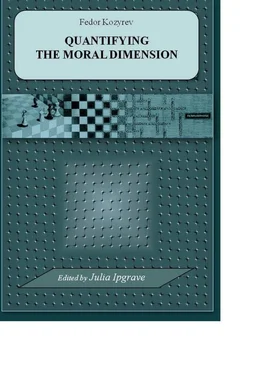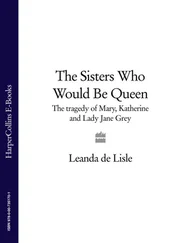A preface by A. Doumcheva opened the book. The main difference of the current English version besides language, is its single focus on a test for diagnostics of moral judgment competence called ONYX, while the double focus of Russian version paid equal attention to another diagnostic tool called Q-sorting. The difference is determined by the much better acquaintance of the English speaking academic audience with Q-sort technique and the availability of English literature on this topic. In Russia this technique is still generally seen in a too narrow way as an attachment to the Carl Rogers’
Self Concept and is used in accordance with this vision. For this reason one of my tasks was to stimulate Q-sort usage in Russian educational research. Yet the English edition is not simply an extract from the original book. Some clarifications, additions and improvements were brought into the text, especially regarding some theoretical issues tackled in my previous publications in Russian.
Besides theoretical observations this book contains a bulk of empirical data collected during our surveys in St. Petersburg schools. How interesting and informative can they be for the Western reader? In order to answer this question I want to refer to the educational research project REDCo (2006—2009) funded by the European Commission and intended to evaluate the role of religion in education for the increase of both dialogue and conflict in the transforming societies of European countries. I was a member of the team coordinating the project’s activity in Russia. The sample for empirical studies used in that project was similar to the sample for further studies described in this book with several schools participating in both projects. What we found during REDCo was a large spectrum of commonalities in religious and moral beliefs of students from different countries. Students from St. Petersburg occupied a middle position in many issues related to religion. In some aspects they could be estimated as less religious (for instance in their attitude toward religious education), in other aspects (such as contemplating religious matters) more religious than an average European. One point only made our students distinct from their Western peers. In reaction to the statement «Religion belongs to private life» only 2% of our respondents disagreed with it, and it was an astonishing figure compared to almost a half disagreeing with it in many European countries and two thirds disagreeing with it in England. Paralleled with some other findings this result was interpreted then as a sign of a special hidden or asocial type of religiosity distinctive of Russian students and probably rooted in collective historical consciousness (Kozyrev & Valk 2009, 326, 335, 340, 346). While keeping in mind this particular point, one may take the REDCo experience as a ground for caution in the extrapolation of data presented in this volume to the European context.
The theses of this book were presented and discussed at many conferences inside Russia and on a few occasions abroad. One of them was ISREV-2014 in York. Another was a couple of meetings (2013, 2015) in Klingenthal (France) organised in the frame of post-REDCo activities for participants of REDCo project. I express my gratitude for this opportunity to REDCo and post-REDCo coordinator Prof. Wolfram Weisse.
I know exactly where my interest for educational studies came from. It was in 2000 in Kappel (Switzerland) that I first met John Hull at a seminar organised by the RE-network (coordinated by Walter Sennhauser). It was from him that I first heard about J. Fowler’s stages of faith as well as about Kohlberg. Professor Hull did much more to excite my interest in the field and years later, having become a professor myself, I used to start my lectures on pedagogy with a story about how one English lecturer persuaded me in an hour or two that pedagogical science exists, although I had doubted it for many years before despite the dozens of lectures on pedagogy I had to attend during my post-graduate education.
The last time I met John Hull in Birmingham, was in his house and several months before he passed away. I told him about our research work and about my plans for revising Kohlberg’s model. He listened carefully and encouraged me to continue the work. Between these two meetings there were many others, and I had a privilege to have John as my guest in St. Petersburg where he came as a missioner of new movements in RE. I dedicate my book to the memory of this great man. Let it be a small reimbursement for the courage, energy, and generosity with which he shared the best achievements of British and, indeed, world pedagogical science with me.
1. Constructivism in the practice of pedagogical research
We start with considerations of constructivism because constructivist thinking is the very bedrock of the attempt to trace patterns of moral judgment presented in this book. Our understanding of this relationship did not come to us in the course of experimental work. It had been there from the beginning shaping the whole project. Constructivism (as we understand it) was our theoretical framework. So, let’s start from the beginning.
The end of the last and the beginning of the current millennium were marked by the growing influence of constructivism in pedagogical practice. The image of a tabula rasa of consciousness (Locke) impressed with unequivocal stamps by means of a «didactic machine’ (Comenius) has ultimately been substituted with the image of a self-developing system, the main determinant of which lies not outside but inside. Constructivism in its radical forms proposed an end to the search for any linear connections between external stimuli and the psychic reactions of the organism and a switch to the study of the internal regulators responsible for a kind of «filtration’ of the experience, i.e. its selection, amplification or reduction through perception and further interpretation. Constructivism made a decisive step to break with behaviourist tradition when it shifted the focus of study from the subject’s reactions to the subject’s internal world. As for comparison with experimental psychology, constructivism gave it a push toward a holistic orientation in line with gestalt-psychology but sublimating its notion of the existence of implicit integral perceptional structures and associating them not with the subconscious but with cognitive characteristics of the consciousness.
The vital impulse for this shift came from Kant and his doctrine of the transcendental structures of consciousness. These structures were named differently after Kant: either noetic elements (Husserl) or the tacit dimension (Polanyi) or cognitive schemas (Piaget) or personal constructs (Kelly). Whatever the terminology, the names referred to implicit structures acting beyond the horizon of the conscious but accessible for scientific and particularly experimental exploration and description. Using a naturalistic analogy, according to the premises of constructivism these structures are responsible for the formation of our conceptions, commitments and outlook just as our digestive organs are responsible for the construction of molecules that constitute our body.
So, we take as a foothold for all the philosophical and pedagogical endeavours of constructivism the Kantian notion of the reconstruction of the outer world by the mind, that is, the belief that knowledge is not obtained in a passive fashion but is actively construed by the cognitive subject. Yet this constructivist offspring of Kantianism offered something new. It was the intention to perceive knowledge as an artificial construction quite contrary to the initial Kantian vision of the spontaneous action of factors inherited by human nature. This turn toward socio-cultural factors emphasised the potential role of education and socialisation in personal formation. And it is not a coincidence that the idea of socio-genesis, first formulated by the Piaget’s disciple Pierre Janet, found such fruitful ground in the constructivist field. It is enough to mention the culture-historical theory of Lev Vygotsky.
Читать дальше












